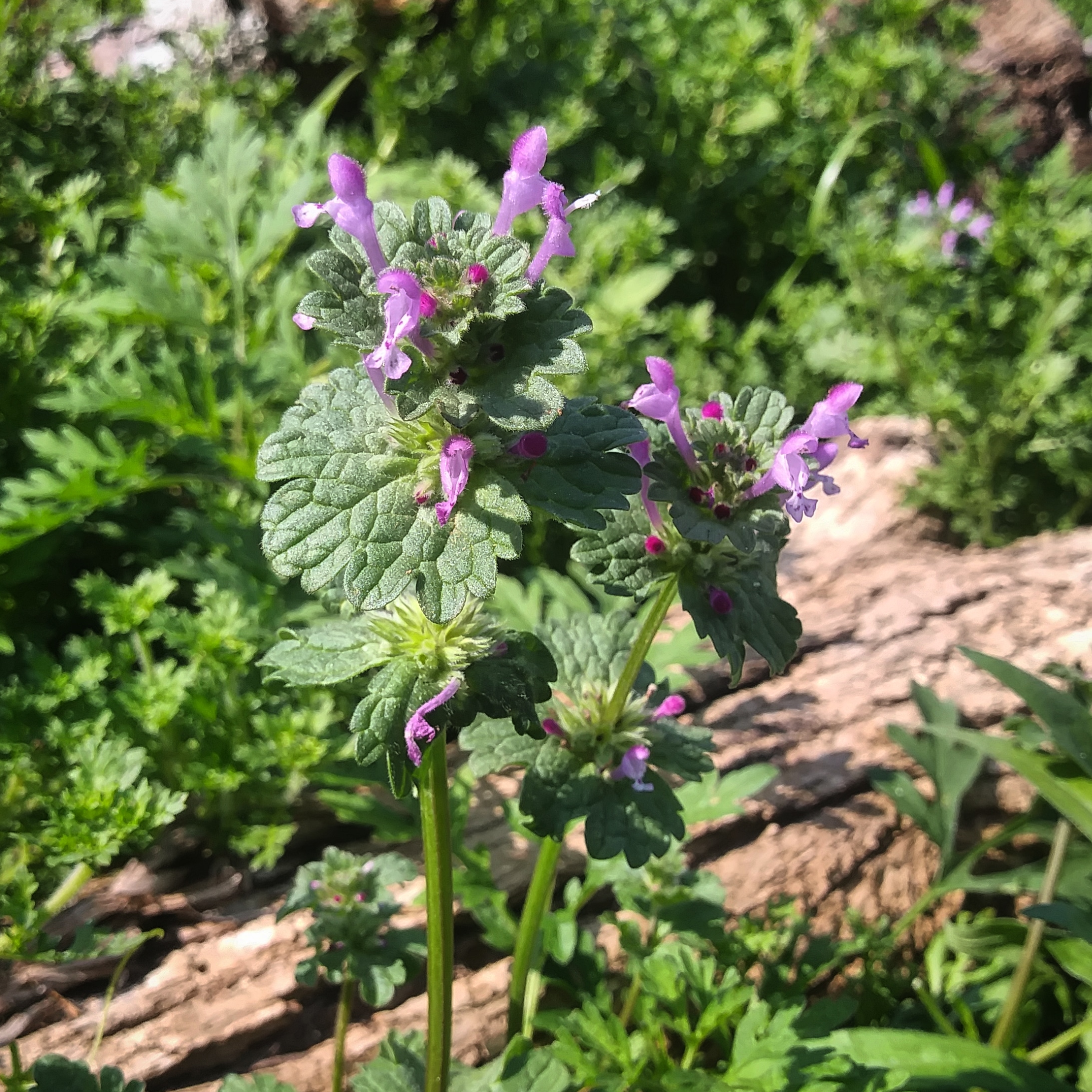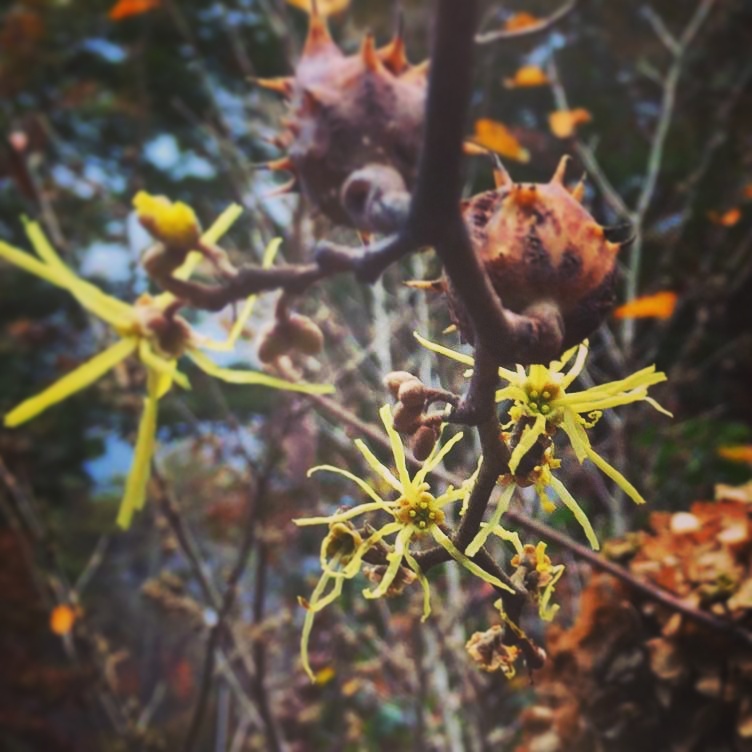Kudzu is a fairly recent addition to the Southern landscape. We all know it’s invasive, but how exactly did it get here? Ironically, kudzu is a rare and treasured plant in its native Japan. It’s cultivated as an ornamental vine in gardens and prized for its purple blooms.
Read moreWild Edible Wednesday 8/19 - Staghorn Sumac
This week’s plant for #WildEdibleWednesday is Rhus typhina, or Staghorn Sumac. Dramatic and exotic-looking with its bright red fruiting bodies, sumac is part of the Anacardiaceae family of plants that includes cashews, mangoes, and pistachios, as well as Brazilian pepper, poison ivy, and poison oak.
Read moreWild Edible Wednesday 6/5 - Henbit Deadnettle
“Henbit season is actually tapering off – it prefers cooler temperatures and rarely thrives in the hottest parts of summer except in cool, moist areas. But it’s still out there, so if you want to try it this year, get it while the getting’s good! Like so many of the plants we’ve covered, check your lawn first.”
Read moreWild Edible Wednesday 4/17 - Purple Deadnettle
“Although it sounds like an alt-metalcore band name (at least to me), purple dead nettle is another common “lawn weed” that you’ve probably walked by every day without knowing what it was. Closely related to Henbit (which we’ll feature in a few weeks) purple dead nettle has a great range of edible and medicinal uses.”
Read more#WildEdibleWednesday 1/2 - Southern Magnolia
“Magnolias aren’t native to the more hilly and mountainous regions of Southern Appalachia, however, they will naturalize here. What that means for us it that nearly every magnolia you see in our area is descended from a tree someone planted.”
Read more#WildEdibleWednesday 11/28 - Red Oak
“Tall, strong, and regal, red oaks grow to between 100’ to 150’ tall, with trunk diameters of 3’ to 4’. Historically, oaks symbolize royalty or authority, hence the use of oak leaves in U.S. military officer’s rank insignia to this day.”
Read more#WildEdibleWednesday 11/14 - Sassafras
“…It only takes a modicum of research and critical thinking to draw the conclusion that the modern claim of sassafras as a dangerous carcinogen is a faulty one based on junk science.”
Read more#WildEdibleWednesday 11/7 - American Sweetgum
“If you were around SARCRAFT in the early days, you would have heard Jonathan and I refer to Sweetgum as the most useless tree in the forest, only good for making toothbrushes (which we’ll touch on in a minute.)”
Read more#WildEdibleWednesday 10/31 - Witch Hazel
“Oh, and about that weird name… why is it witch hazel? Well, there are two explanations….”
Read more#WildEdibleWednesday 10/24 - Dogwood
“During the Civil War, the Yankees put us in a tight spot by blockading our ports, preventing any shipments of supplies or medicine from coming through from the outside. In the Deep South, malaria and yellow fever were serious problems back in that day, and were taking many desperately needed men out of the action on the battlefield.”
Read more#WildEdibleWednesday 10/10 - Goldenrod
“Goldenrod gets a bad rap for causing fall allergies, and it’s not surprising why… the bright yellow flower heads look like pure pollen. However, it’s really a case of mistaken identity….”
Read more#WildEdibleWednesday 9/26 - American Beautyberry
“The scientists at Ole Miss who discovered callicarpenal first began their research because their grandparents had all used beautyberry leaves to repel mosquitoes. Lo and behold, they were right.”
Read more#WildEdibleWednesday 9/12 - Orange Jewelweed
Medicinally, jewelweed really only has one application: Used externally, as a poultice or decoction. However, in this application, it’s fantastic.
Read more#WildEdibleWednesday 8/15 - Heal All
Like most medicinal herbs, Heal All was cast aside by modern medicine more than a century ago in favor of synthetic pharmaceuticals. Plant medicines have been considered by most physicians and pharmacists in the past hundred years to be unreliable folk tales at best, and dangerous at worst. Even among the herbal medicine community, Heal All was marginalized to a second-tier herb in favor of more powerful and trendy plants. But modern science may be vindicating it.
Read more#WildEdibleWednesday 8/8 - Mountain Mint
The power of this herb can’t be underestimated, as is evidenced by the reverence in which native Americans and pioneers alike held it. The Choctaw considered it sacred, and swore by it as a last-ditch effort to revive the dying… and even raise the dead.
Read more#WildEdibleWednesday 7/25 - Maypop Passionflower
“Before all children everywhere became locked on iPad screens, kids in the country used to have fights with green maypops. They’re a uniform shape and easy to throw accurately, and they raise a good welt if you throw them hard. They make an awesome hand grenade if you’re nine years old and have an active imagination. (I may or may not be speaking from experience.)”
Read more#WildEdibleWednesday 7/18 - Fleabane
“And all those paintings, books, and movies depicting pretty medieval peasant girls with a sprig of the daisy-like flowers tucked behind their ear or woven into crown? They were trying to keep fleas out of their hair, which was a constant problem in the Middle Ages. Attractive, right?”
Read more#WildEdibleWednesday 7/4 - White Pine
“The true American answer to overbearing authority is defiance, not obedience. After all, they were willing to pick a fight with the British Crown over a tree.”
Read more#WildEdibleWednesday 6/13 - Dewberry
Some plants that we’ve covered in the past, while they’ll keep you alive and might even be highly nutritious, really just taste awful. But then there are those that are not only passable, but delicious.
Read more#WildEdibleWednesday 5/23 - Red Clover
“As medicine advances and more and more compounds are synthesized from natural sources, maybe it’s time we humbled ourselves and realized that the ancients knew what they were talking about.”.
Read more



















